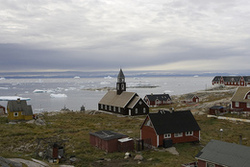Arctic States
The three large federations, Russia, Canada and the USA, are respectively, the first, second and fourth largest stakeholders in terms of Arctic lands. The total area of Greenland is larger than the total area of Alaska. The Russian quadrant, by far the largest, spans Eurasia to western North America, roughly from meridian 32°04' 35" E to meridian 168° 58' 37" W. Given its vast territory, no initiatives regarding Arctic governance can succeed without due attention to Russia. The North American quadrant is comprised of northern Canada and northern USA (Alaska); whereas the European quadrant includes Greenland, the Faroe Islands, Iceland, northern part of Norway, Sweden and Finland. Sweden and Finland are considered Arctic states but have no coastlines on the Arctic Ocean.
The Arctic Ocean
The Arctic Ocean, the core of the region, is the smallest of the world’s five oceans. It covers an area of approximately 14 million square kilometers, or about 1.5 times the size of the USA, with a maximum depth of 5,500 meters (18,040 feet). The Arctic Ocean has the widest continental shelf of all the oceans. The shelf is wide and shallow off Europe and Asia, all the way from the Barents Sea in the west to the Bering Strait. In some areas along this coast, the continental shelf extends a significant distance toward the North Pole. The corresponding continental shelves off Alaska, Canada and Greenland are significantly narrower. Norway, Russia, the USA, Canada, Iceland, and Denmark/Greenland all have an Arctic continental shelf. A sparse network of air, ocean, river and land routes circumscribes the Arctic Ocean.
 |
| Ilulissat church by Daniel Heaf |
The Ilulissat Declaration
The Ilulissat Declaration, adopted by the Ministers of Foreign Affairs of Canada, Denmark, Norway, Russia, and the United States on May 28th, 2008 reminds us that while there are pressing issues to address in this region, existing national and international legal frameworks already cover large parts of the Arctic region and address a range of issues.
